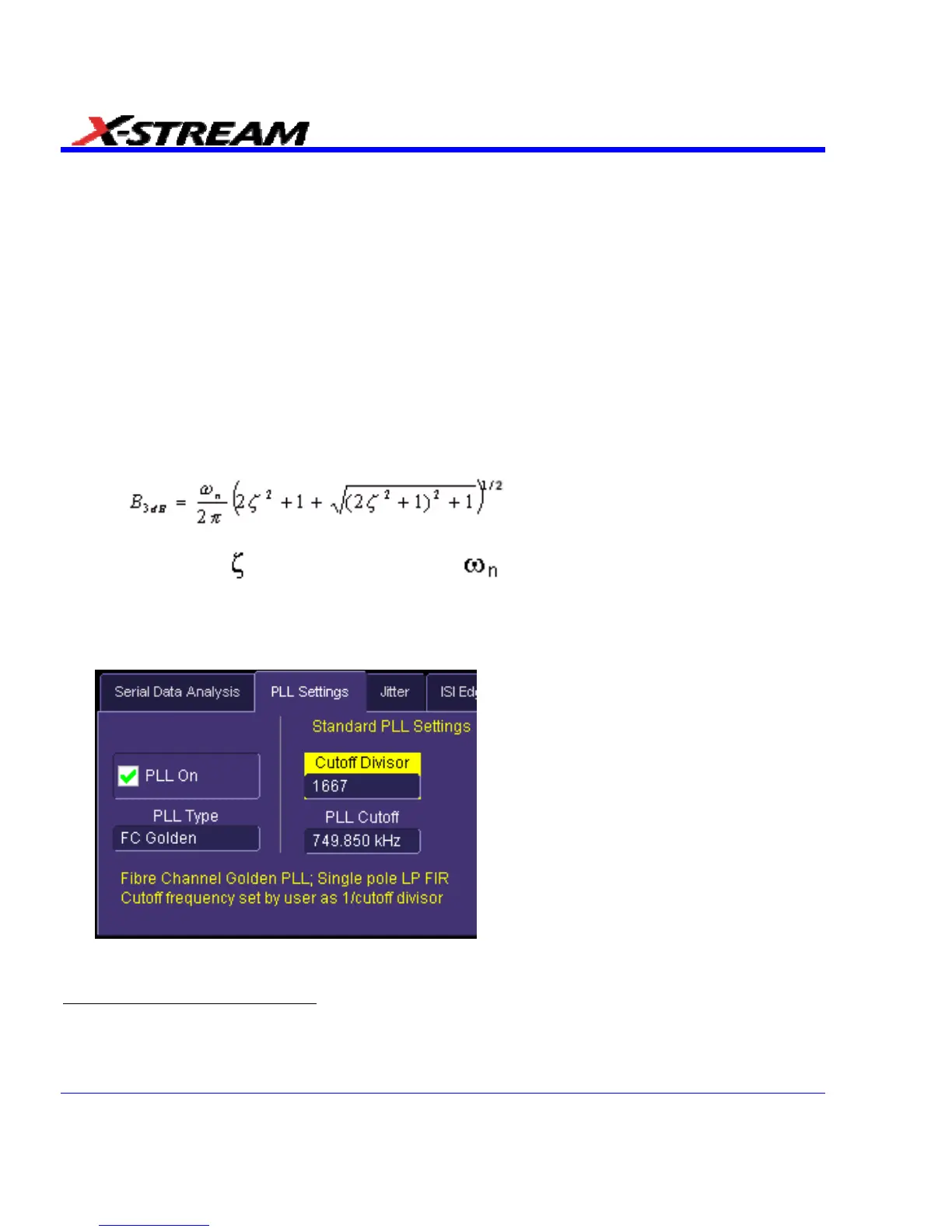The second order PLL allows the selection of the natural frequency and damping factor.
The damping factor determines the transient behavior of the phase locked loop and is
variable from 2 to 0.5. A damping factor above 0.707 results in an under-damped
response in which the PLL over-corrects to a sudden change in frequency, but reacts
quicker to the change. A damping factor below 0.707 gives an under-damped response
that reacts slower to sudden changes in frequency, but does not over-correct. The
default value of 0.707 represents a critically damped response that provides the fastest
reaction time without over-correcting. The second order PLL with a damping factor of
0.707 is specified in the serial ATA generation II document. This type of PLL is also very
useful for measuring signals with spread-spectrum clocking because it accurately tracks
and removes the low-frequency clock spreading while allowing the signal jitter to be
measured.
The natural frequency is somewhat lower than the actual 3 dB cutoff frequency given by
the following equation:
The quantity
is the damping factor, and is the natural frequency. For a damping
factor of 0.707, this relationship is f
c
= 2.06 f
n
.
3. Settings for the FC Golden PLL - Touch inside the Cutoff Divisor
5
field and provide a
value using the pop-up keypad.
316 SDA-OM-E Rev H
5
The PLL cutoff divisor is the value by which the bit rate is divided to compute the cutoff frequency for the loop bandwidth
of the clock recovery operation for sequential eye pattern, jitter, and bit error rate functions. This control is variable from
10 to 1,000,000. A low PLL cutoff divisor means that the PLL will track and, therefore, attenuate jitter at higher
frequencies. The default value of 1667 causes the clock recovery to operate as a "golden PLL," as defined in the
Fibrechannel specification.

